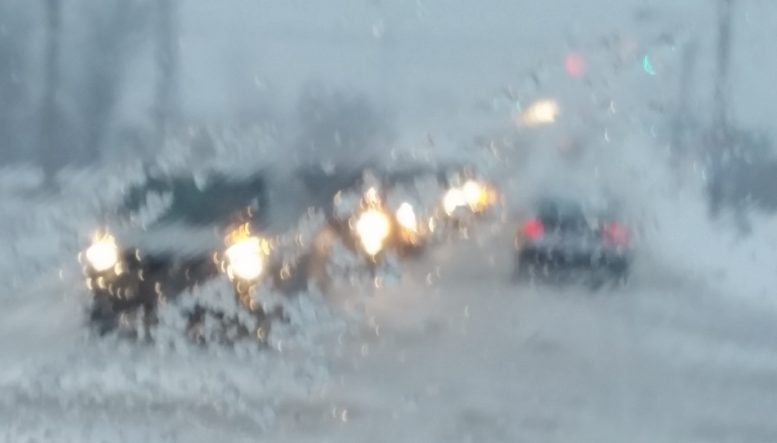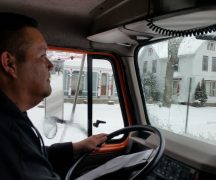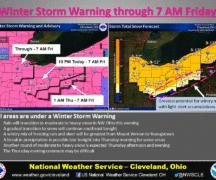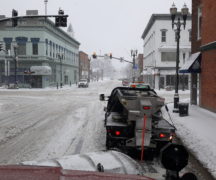By JAN LARSON McLAUGHLIN
BG Independent News
After the first snow of any substance this year, the city is getting a flurry of complaints about its “snow emergency” policies which go into effect with two or more inches of snow.
During the 24-hour snow emergency from Sunday morning to Monday morning, the city had 27 vehicles ticketed and towed, and another 22 ticketed only.
Municipal Administrator Lori Tretter explained the city’s snow removal policy and its responsibility to keep the roadways safe.
“The business of clearing snow is taken seriously,” Tretter said to Bowling Green City Council on Monday evening.
“We recognize some may be frustrated by our regulations,” especially the rule that all vehicles must be removed from “snow streets” within two hours after the city issues a “snow emergency,” she said. If the emergency is declared in the night, motorists have until 9 a.m. to move their vehicles.
Realizing that many people may not be familiar with the snow streets regulations, Tretter said before a big snow hits, the city ramps up its communication with Code Red alerts and news releases. And she noted that the blue and white snow street signs have been in place since at least 1978.
During Monday’s meeting, Tretter shared some of the common questions about the city’s snow removal policies.
Some inquiries are quite specific, like “why isn’t Pearl Street a snow street?”
Because Pearl Street has no on-street parking, Tretter explained. Only streets with parking and cul-de-sacs are snow streets.
A full list can also be found on the City’s website: https://www.bgohio.org/departments/public-works-department/public-works-division/snow-guidelines/.
The purpose of the snow street rules is to allow for more thorough clearing of snow from the roadways.
But Tretter said she realizes this can be difficult for some.
“Finding alternative locations to park can be a challenge,” she said.
The police division does make an effort to locate the owners of vehicles left on snow streets – but Tretter added that streets are public right-of-ways, which means no one has the guaranteed right to park on them.
Some residents ask if the city’s snowplow drivers can make a better effort to not plow snow onto driveways or sidewalks.
“That is frustrating,” Tretter acknowledged.
“But there really is no way for a plow driver to plow a street and lift the plow at every driveway,” she added.
Others have asked why the city doesn’t plow the snow into the middle of the streets – like it’s done in the downtown area. Tretter explained that most streets are not wide enough to have the snow plowed into the middle, plus it is very time-consuming to remove mountains of snow from the center of streets.
Some residents want to know why their street doesn’t get plowed as soon as some others. Roads with the highest traffic volume are the priority, Tretter said.
“We understand the route you drive is the most important to you,” she said. “But understand, everyone feels that way.”
The public works department prepares for winter weather, and tries to figure out the best response well before the first snowflake falls, Tretter said.
“The job of plowing is not an easy one,” she said, praising the work of snowplow drivers who worked 12-hour shifts on Sunday.
Tretter also noted the city’s requirement that landowners remove snow from sidewalks within 24 hours after the snow ends.




